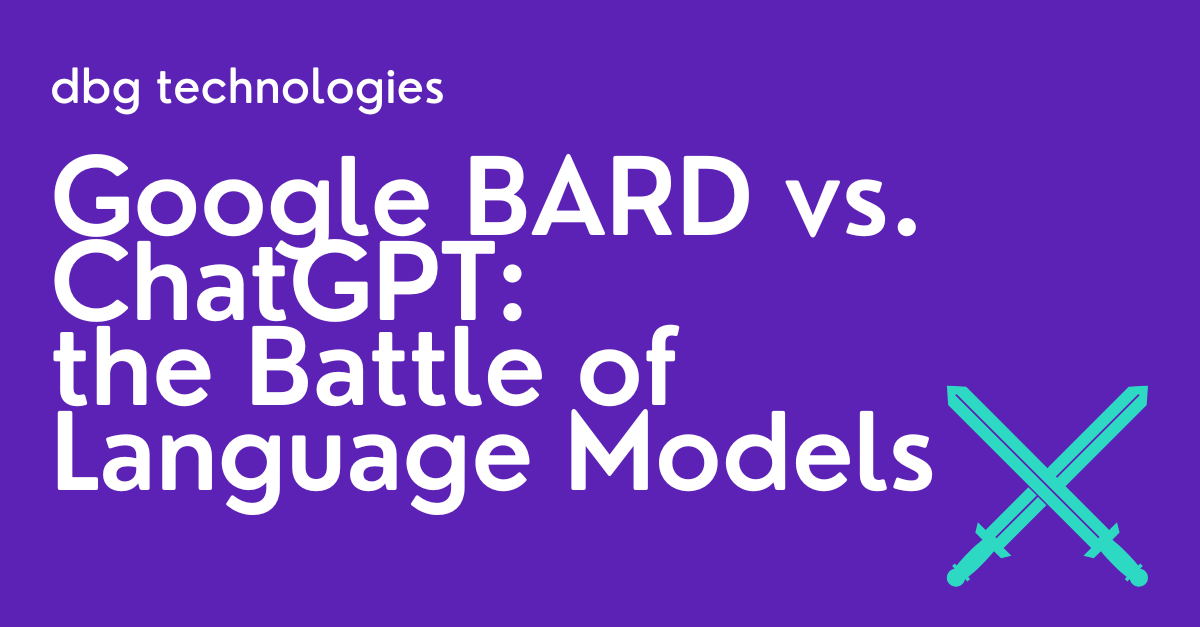 In the realm of artificial intelligence, language models have taken centre stage, transforming the way we interact with machines and pushing the boundaries of natural language processing. Among the prominent players in this domain are Google BARD and ChatGPT, two powerful language models designed to understand and generate human-like text.
In the realm of artificial intelligence, language models have taken centre stage, transforming the way we interact with machines and pushing the boundaries of natural language processing. Among the prominent players in this domain are Google BARD and ChatGPT, two powerful language models designed to understand and generate human-like text.
Google BARD, short for “Biologically Augmented Language Model,” is a cutting-edge language model developed by Google, drawing inspiration from the human brain’s neural architecture. BARD incorporates principles of neurobiology to simulate human-like language understanding and generation. It leverages a complex network of interconnected artificial neurons to process and analyse textual data.
On the other hand, ChatGPT, powered by OpenAI’s GPT-3.5 architecture, is a widely acclaimed language model that has revolutionized the field of natural language processing. Built on a transformer-based model, ChatGPT utilizes attention mechanisms to capture relationships between words and generate coherent responses. It has been trained on a diverse range of internet text, making it proficient in various domains.
One of the significant distinctions between Google BARD and ChatGPT lies in their training data and knowledge base. Google BARD benefits from access to a vast array of proprietary Google resources, including books, articles, and web pages, allowing it to tap into a wealth of information. This access to extensive knowledge aids BARD in providing accurate and contextually relevant responses.
In contrast, ChatGPT’s training data consists of publicly available internet text, which, while broad, may not match the proprietary resources accessible to Google BARD. However, OpenAI’s meticulous training process and large-scale dataset ensure ChatGPT’s understanding of a wide range of topics, making it a versatile language model.
When it comes to domain-specific knowledge, Google BARD exhibits a remarkable advantage. Its connection to Google’s vast information ecosystem empowers it with expertise across multiple domains, including science, history, technology, and more. BARD excels at understanding nuanced queries and providing accurate and up-to-date information, making it an invaluable resource for complex technical inquiries.
While ChatGPT may not possess the same level of domain-specific knowledge as Google BARD, it compensates with its versatility. ChatGPT can engage in open-ended conversations, creative writing, and brainstorming sessions. It can be customized to cater to specific domains through fine-tuning, although it may require additional training data to achieve domain expertise comparable to Google BARD.
Ethics play a vital role in AI development, ensuring responsible and unbiased use of language models. Google BARD adheres to Google’s stringent ethical guidelines, focusing on maintaining fairness, inclusivity, and avoiding bias in its responses. Google’s extensive research and development resources contribute to continuous improvements in ethical AI practices.
OpenAI’s ChatGPT has also made significant strides in addressing ethical concerns. However, it is worth noting that as an AI language model trained on publicly available text, it may inherit biases present in the data it was trained on. OpenAI has emphasized the importance of refining and enhancing models’ alignment with human values, actively seeking community feedback to improve their ethical considerations.
Google BARD and ChatGPT represent two distinct yet powerful language models at the forefront of AI technology. While Google BARD excels in domain-specific knowledge and benefits from Google’s extensive resources, ChatGPT offers versatility and open-ended conversational capabilities. Choosing between these language models depends on the specific requirements and use cases. As the field of AI continues to evolve, further advancements in language models will undoubtedly bring us closer to achieving truly intelligent and human-like machine interactions.
